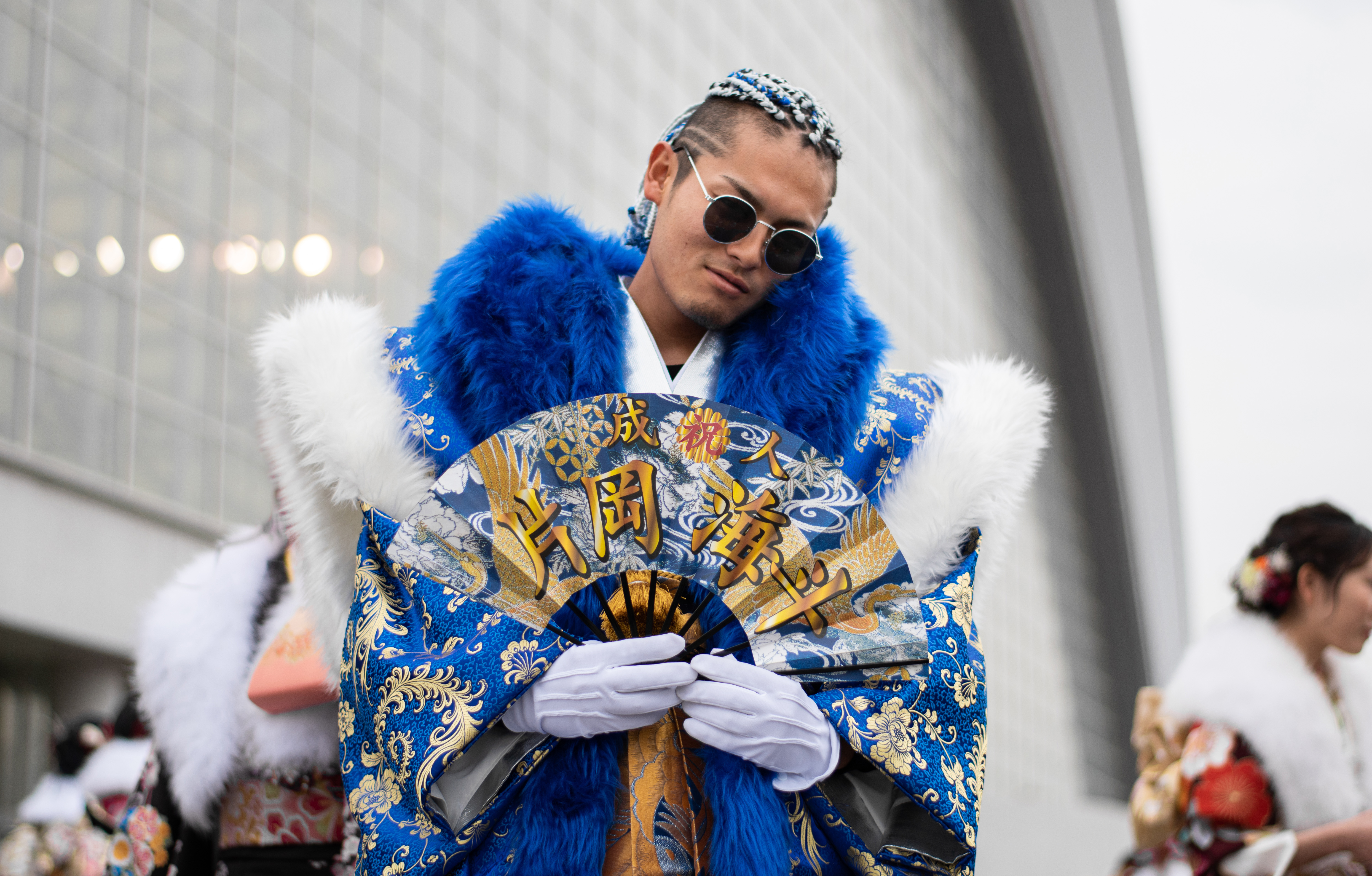This article originally featured in the May 2020 issue of Connect.
Interview with a YouTube Creative
Bobby Coutu (Okayama) | Rachel Fagundes (Okayama)
Q: Tell me about your YouTube channel, Q2 Japan! What kind of content do you make?
In a nutshell, my channel is filled with all kinds of content about life and culture in Japan. Whether it be about festivals, martial artists, katana artisans, izakaya owners—if it’s related to Japan, I’ll show it. I have no CGI skills and I do most of the production by myself, so a lot of the videos are short, 5-10 minute interviews. But my channel has no absolute style, so I like to try new ways of recording and editing. For example, I’ve made a few cooking videos with expat friends where they share recipes from their respective cultures. Other videos are more instructional, where I try to inform the audience about IC cards or ESL in Japan. If anyone out there wants me to try something or wants to collaborate, I’m always open to these creative ventures.
 Q: How did you get started making videos?
Q: How did you get started making videos?
My first video was in October of 2018. I started off making travel vlogs on my channel, mainly as a way to practice my video production skills. I had been doing professional photography for about a year and a half and upon a friend’s suggestion, I took up videography after moving to Okayama in September of 2018 (so my first video was soon after that). YouTube just seemed like a practical outlet for experience.
Q: Tell me about the process of making a video.
Pre-production is often the biggest pain in the butt when it comes to video making. This is where I typically start contacting people about a video idea (because most of my videos are documentary style). If I already know someone who fits the bill for an interview (e.g., I want to interview a calligrapher and happen to know an excellent calligrapher), that’s amazing. But half the time, I have an idea but no real leads. So I ask a bunch of my friends if they know anyone or know anyone who knows anyone, etc. . . . Some projects build up speed quickly and others fizzle within days. That’s why it’s important to write down your ideas and to keep trying as many as possible.
Production is where I’m actually going out to the shoot location and recording video. This is usually the most stressful part, but also the most insightful. You learn a lot from going to various locations, meeting people, and listening to their stories. I always forget something (whether it’s a camera setting or spare batteries), so it can get stressful. But that’s a part of usually working as a one-man crew.
Post-production is actually my favorite part of video making. It’s where you collect everything you’ve worked so hard to record and cut it up into something that’s entertaining. It’s tempting to render out a video and upload right away, but I’ve learned over the years that there’s no rush, so just take your time and make a few drafts.
Q: How have you taught yourself to improve your videos over the years?
A lot of trial and error will go a long way toward improvement. I always try to listen to people’s comments and suggestions, even if it hurts. If video making is something you’re serious about, you just have to be willing to get your ego hurt. I also use YouTube tutorials a lot for editing and shooting tips. We live in an amazing time for shared information!
A few specific things I needed to improve at the beginning were:
➢ shooting at appropriate frame rates
and shutter speed
➢ understanding camera movement
➢ improving audio quality
➢ learning the basics of linear editing

There’s a whole laundry list of skills that I’m still working on, but if you aspire to be a creator, you’ll quickly find that you need to have a wide set of skills. You will inevitably miss certain things, like setting the white balance or double-checking your batteries, but that’s ok. You have to roll with the punches and ask for help when you can get it in order to maximize the quality of what you produce.
Q: What equipment do you bring to a shoot?
I’ve continued to use my Nikon D5500 for a lot of my projects. I’ve had it for about four years now and it’s somehow continued to shoot solid photos and videos. I did upgrade last summer to the Panasonic GH5s, but I still use the Nikon as my B-camera.
Like many photographers, I just accumulated a lot of gear over time. Here’s a list of typical gear I bring to my YouTube shoots now with: Panasonic GH5s, Nikon D5500, 2 tripods, drone (Mavic Air), gimbal (Weebill S), GoPro Hero 5, 2 Zoom H1 audio recorders, 2 lapel mics, back up batteries, and memory cards.
Q: What’s the most unexpected thing that’s happened while shooting a video?
The most unexpected thing that happened was that my very first drone crashed on it’s sixth ever flight. I almost had a panic attack because if anyone had been close to me they could have gotten hurt. Luckily no one did and nothing was damaged (except my drone). Later I found out that that specific model had been recalled in the U.S. months before. Pick your drones wisely (DJI usually make good ones).
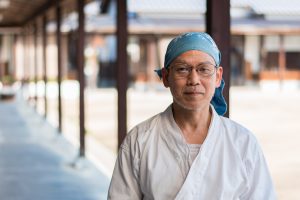
Q: How do you go about structuring a narrative to a video?
I usually have a vague idea about how to start and finish a video, but you really have to just shoot and see what happens on the editing room floor. It’s similar to cooking, in that sometimes you don’t always have the ingredients you’d like, but ya gotta make something! And sometimes those limitations can help you craft something even better than you originally imagined. I do recommend being flexible and taking your time with shooting videos though.
At the beginning, I had no idea what I was doing so there was absolutely no storyboard in my head. I would visit a place like a Sake Festival or a small town in Okayama and do almost no research on it (do NOT do this). People want to see a narrative structure in videos. It can be as simple as, “Hop on the train to the beach, enjoy the beach, go home.” But if your video is missing certain narrative elements like place, time, action, it’s just chaotic and boring. If you’re interested in doing travel vlogs, I recommend you look into why someone would want to watch your channel. Is it to be informed of logistical considerations? Are you an entertaining person? The reason I stopped doing travel videos is because I can’t really do justice to the area I’m visiting by shooting a poorly planned, spontaneous video. If I’m going to promote a place, I want to make sure I do a solid job of it, spending days on shooting the way I imagine the area to be.
Q: Why do you think people are so interested in Japan? Why aren’t there as many people making videos about living abroad in Italy, Mexico, or India?
I have a feeling most visitors like the accessible exoticism of Japan. It’s rather safe and clean here, all the while being quite different from Western societies. Japan’s got a lot of interesting traditions that have continued as parts of everyday life (albeit sometimes in modernized forms). From martial arts to tea ceremonies, calligraphy, music, and festivals, a lot of people around the world would like to know more.
Anime may be another factor, but I think fans of Japanese media are only a subgroup of people interested in Japan.
Q: What has been your favorite video you’ve made and why?
My favorite videos are probably the ones on karate, wagashi*, and iaido**. All of these videos are in the typical short interview style. It felt rewarding to make these videos and I have lasting good memories of the people I talked to. The karate one was just a cool opportunity to visit a kids’ dojo and I was really happy with some of the action shots. For the wagashi video, I just love the family that I interviewed. The Kaji family are sweet people and I try to visit them at least once a month to just chat. I usually become friends with the people I interview, but they’re by far the closest friends I’ve made from my YouTube channel. And in terms of the iaido video, it’s my most viewed video and I learned a lot about shooting and editing for that one. It was the first video I made that I was truly proud of.
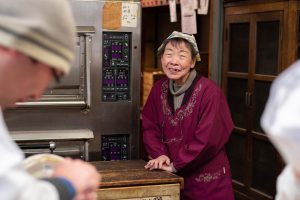
Q: What is the most fun aspect of making a YouTube video?
I’d say that meeting new people and having a body of work are the two most rewarding parts of making YouTube videos. It’s a lot of work but you never know how many people you may reach. At the end of the day, if people watch your content, you feel validation. It’s unfortunate, but the number of views, likes, and subscribers you get can impact how positively you feel about your channel. So it’s important not to get too caught up in trying to be online famous. Remember that the tangible relationships you build with people through collaborating with them are not only real, but enriching. Through my channel, I’ve been able to meet jewelers, calligraphers, priests, ramen chefs, people from all walks of life. Remembering these great people helps me keep going. Also, make sure to look at your channel library and take in all the videos you’ve been able to create. That catalogue is there to remind you that you made those with your creativity.
Q: What is something that you struggle with about this art form?
Getting permission to shoot in Japan can be tough, especially if you introduce yourself as a YouTuber or videographer. Japanese people typically trust broadcasters like NHK, OHK, RSK, but not freelancers. So having a bit of fame would be nice, just to get a foot in the door more easily.
Q: How has being Japanese American, and fluent in Japanese, affected your videos?
There’s always a positive and a negative outlook on a situation, so I try to keep that in mind when working on a project. For example, being mixed Japanese, my identity and language abilities are a bit ambiguous for many Japanese people. If I were white, blonde, and spoke little Japanese, I would fit into a stereotype that might help me get into typically difficult shooting locations (i.e., being the Token White Guy). But my unique identity can also help in understanding people and building relationships, which can ultimately improve the quality of my narratives.
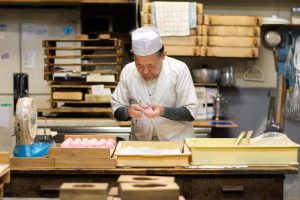
Q: Do you consider your videos to be entertainment, education, art, or all of the above?
I think all of the above. You have to make educational material that’s enticing, otherwise people lose interest within a minute. Just look at some of the most popular TikTok or (old) Vine videos. Most of them are shot on smartphones and have poor lighting, but they’re entertaining and short. My personal goal as a videographer is to create thought-provoking content that is also visually pleasing. But the longer the content, the more difficult it is to keep viewers’ attention. So the more I make videos, the more I focus on lighting, cinematography, and capturing beautiful images.
Q: Can you talk a bit about the financial side of making YouTube videos?
So I’ve been eligible for monetization for about four months now. It took me a few years to get there, but here’s the basic breakdown.
You need at least 1,000 subscribers and at least 4,000 watch hours within a 365 day period. The watch hours was the killer. It was very difficult to get past that hurdle, but I was somehow able to do it thanks to the popularity of the iaido video, as well as the kendo and sword artisan videos.
To this day I’ve made 56 public videos and about a whopping $30 total from monetization. You really need to be getting hundreds of thousands of views in order to make a living off of ad-sense alone. That’s why a lot of full-time YouTubers use Patreon, accept sponsors, and sell merch.
Q: How has making these videos changed your life or your experience of Japan?
I think that making videos has allowed me to meet more people than I ever could have met through teaching or other 9 to 5 professions. I have to take the initiative, do the research, and reach out to these people. So if it wasn’t for the specific goal of making a video I’d never get to know these individuals and their passions.
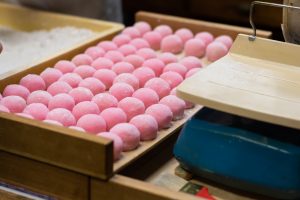
Q: What future projects do you have coming up?
Some immediate projects are videos on DNA and Japanese identity, Safe Sex in Japan, and Renting Apartments in Japan. A long term project I’m working on will be about the Nagashima Aiseien, a former leprosarium in Setouchi City. From the 1930s to the 1990s, there were leprosariums (leprosy concentration camps) throughout Japan. There was and still is a large stigma towards people with Hansen’s Disease and thousands of Japanese citizens were rounded up throughout the decades and sent to islands to live out the rest of their lives isolated from society. Some of the surviving residents of the Nagashima Aiseien (in Okayama) have agreed to make a year-long documentary with me. However, due to the COVID-19 pandemic, the project is on stand-by.
Bobby Coutu is a freelance photographer/videographer living in Okayama, Japan. He has been in Okayama for almost three years now and has had the opportunity to meet people from all walks of life here. Whether they be politicians, artisans, martial artists, or educators, all the people he meets have something to share (albeit with a bit of coaxing). His YouTube channel focuses on life in Japan and the deep traditions that provide the foundation of Japanese identity. If you have any interest in videography or helping him out in any projects, please let him know! You can contact Bobby via Instagram @q2japan, visit his Youtube Channel, or check out his Patreon Page.




